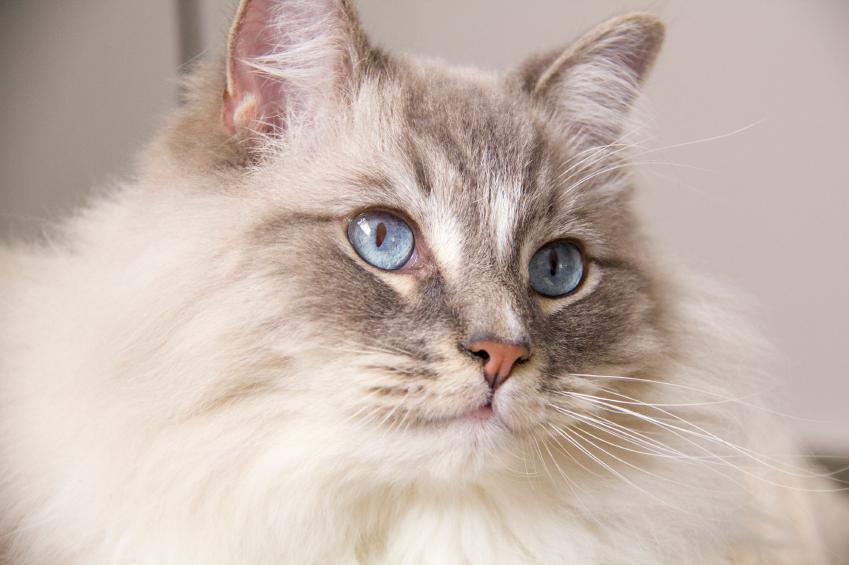Ragdoll cats are a popular and enchanting breed known for their gentle nature and striking appearance. However, like any breed, they are not without their share of misconceptions and myths. In this article, we will debunk 20 common misconceptions about Ragdoll cats to provide a balanced and accurate understanding of this fascinating feline breed.
- Ragdolls are Dumb Cats: This is far from the truth. Ragdolls are intelligent cats that can quickly learn tricks and commands. They are known for their problem-solving skills and can adapt well to interactive toys and puzzle games that challenge their minds.
- They are Always Limp and Floppy: While Ragdolls are generally relaxed and enjoy being held, they can exhibit playful and energetic behavior as well. They might go limp when picked up due to their docile nature, but they are also active and enjoy interactive playtime with their owners.
Read also: The Enchanting Grey Ragdoll Cat: A Guide to Their Personality and Care
- Ragdolls Feel No Pain: Like all living creatures, Ragdolls can experience pain. Their calm nature might mask discomfort, making regular vet check-ups essential to ensure their well-being.
- They Don’t Need Grooming: Ragdolls have semi-long fur that requires regular grooming to prevent matting and hairballs. Regular brushing sessions also help to reduce shedding and keep their luxurious coat in top condition.
- Ragdolls are Hypoallergenic: While Ragdolls do produce fewer allergenic proteins, no cat breed is entirely hypoallergenic. People with allergies should spend time with a Ragdoll before bringing one home to see how they react.
- They are Low-Maintenance Pets: Despite their calm demeanor, Ragdolls need mental stimulation and interactive play to thrive. Neglecting their need for companionship and enrichment can lead to boredom and behavioral issues.
- All Ragdolls Look Alike: Ragdolls come in various colors and patterns, providing a wide array of unique appearances. Common color patterns include colorpoint, mitted, and bicolor, each with its own distinct charm.
- They Don’t Shed: While they shed less than some breeds, they do shed, and regular grooming can help manage it. Expect seasonal shedding and be prepared to brush them regularly.
- Ragdolls Don’t Mind Being Alone: Ragdolls are social cats and can suffer from loneliness if left alone for extended periods. They crave human interaction and can become stressed or anxious without it.
- They are Fully Non-Allergenic for Everyone: While some people with cat allergies may tolerate Ragdolls better, it’s not a guarantee for everyone. Allergy sufferers should spend time with Ragdolls before making a commitment.
- Ragdolls are Always Quiet: While not excessively vocal, they can meow and trill to communicate with their owners. Some Ragdolls are more talkative than others, and their communication may vary based on their personality.
- They are Highly Destructive: Ragdolls are not prone to destructive behavior unless they are bored or lack mental stimulation. Providing toys, scratching posts, and interactive playtime can prevent destructive tendencies.
- Ragdolls Don’t Scratch: Like all cats, Ragdolls may scratch to mark their territory, stretch their muscles, and maintain their claws. Providing appropriate scratching posts can help redirect this behavior.
- They are a New Breed: Ragdolls have been around since the 1960s, making them a well-established breed. They have gained popularity over the years and are now recognized by various cat registries.
- Ragdolls are Not Playful: They can be playful and enjoy interactive toys and games with their owners. Playtime is an essential part of keeping them mentally and physically stimulated.
- They are Prone to Health Issues: While some genetic issues can occur, responsible breeding and regular vet check-ups can minimize health concerns. Ragdolls are generally healthy cats with a lifespan of around 12-17 years.
- Ragdolls are Not Good with Children: On the contrary, Ragdolls are generally gentle and patient with kids, making them excellent family pets. Supervision is always recommended when introducing any pet to children.
- They Don’t Need Social Interaction: Ragdolls thrive on companionship and prefer being around their owners. They may follow their humans around the house and enjoy being part of family activities.
- Ragdolls Can’t Jump: While they might not be as agile as some breeds, they are capable of jumping and climbing. Their sturdy build allows them to navigate various heights with ease.
- They Require Minimal Attention: Ragdolls still need attention, love, and care like any other pet. Neglecting their emotional needs can lead to behavioral issues and an unhappy cat.
Conclusion
Misconceptions about Ragdoll cats are common, but by understanding the truth behind these myths, we can appreciate these enchanting felines for who they truly are. Ragdolls are intelligent, affectionate, and beautiful companions that bring joy and love to their owners’ lives. As with any pet, providing them with the care, attention, and love they deserve is key to a happy and fulfilling relationship with these wonderful cats.

1 thought on “Debunking Misconceptions: 20 Common Myths About Ragdoll Cats”